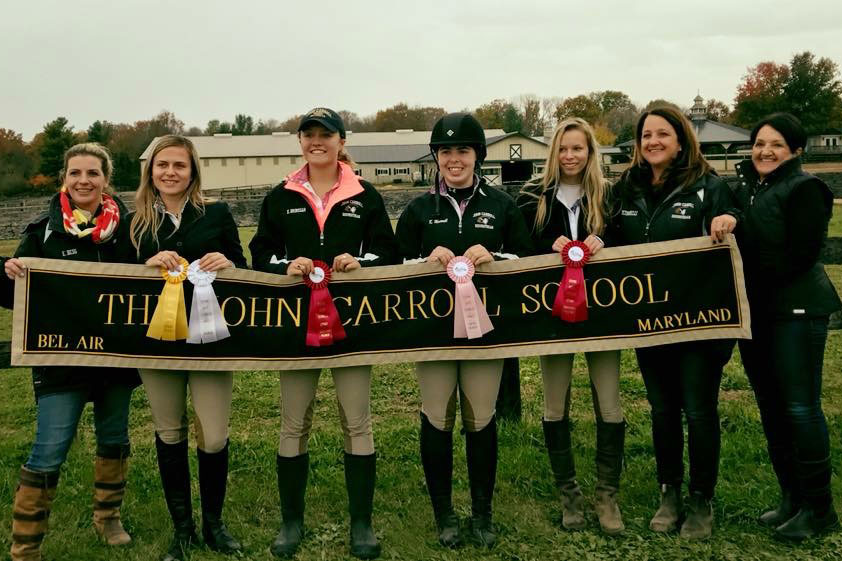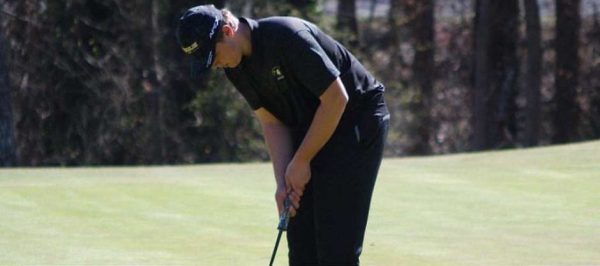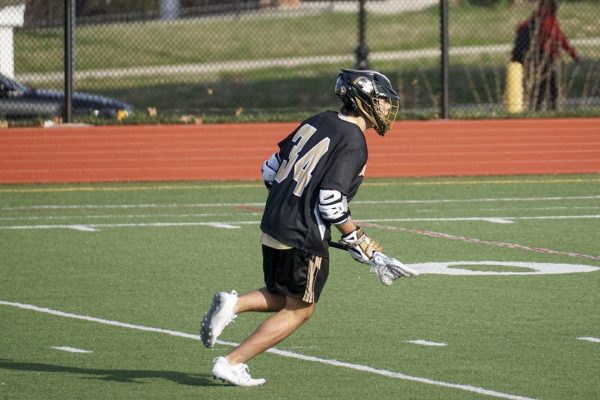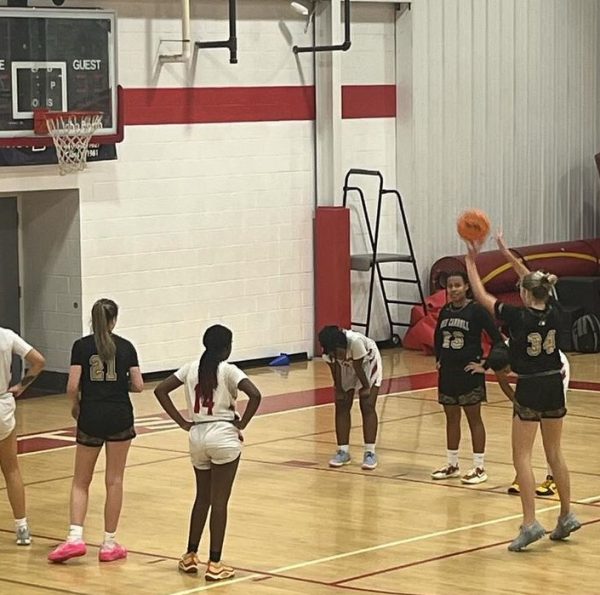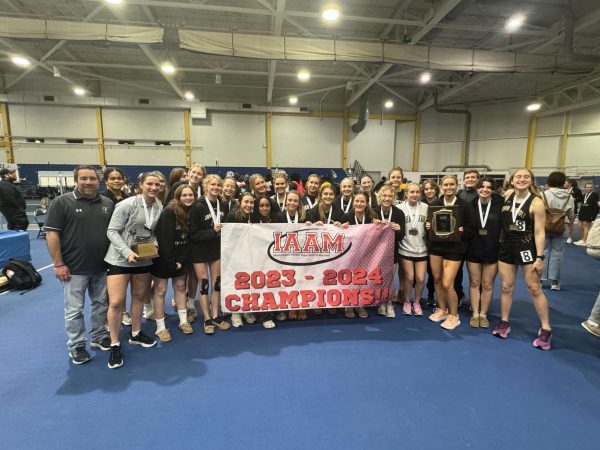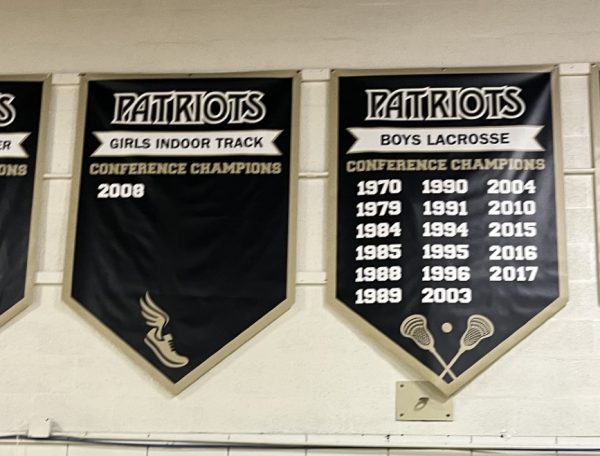Saddled up for showtime
The equestrian team breaks down barriers and overcomes stereotypes
The JC equestrian poses for a photo at Stonegate Stables in Virginia on Nov. 4.
February 12, 2018
Senior Katie Brinegar wakes to the sound of her alarm clock at 4 a.m. She puts on her britches, dresses in her white button-up shirt and black blazer, pulls on her tall boots, and quickly grabs her white gloves and helmet on her way out the door to the barn. Brinegar, along with other riders representing The John Carroll School, are making final preparations for showing day.
The John Carroll equestrian team practices at least once a week at Claddagh Manor in Churchville, MD in order to hone their skills and prepare for shows. Three to five team members ride during one practice time in order to allow time for coaches to do individual work with the riders.
In addition to practicing for a showing, all riders must be properly dressed and prepared with clean horses if they are hosting or semi-hosting a showing at their barn. “We’re there every day [of] the week before [we host] preparing horses, brushing them, and washing them, and getting them perfect for show day,” Brinegar said. Some riders like junior Kayla Maxwell will take an extra lesson or two the week before a showing in addition to regular practice.
The team competes in the Interscholastic Equestrian Association (IEA) in Zone Three, a region that includes Maryland, Delaware, Virginia, and North Carolina. Maxwell believes their toughest opponents this year will be Oldfields School and St. Timothy’s School. “When you’re riding a horse, you’re getting on something that has a complete mind of its own, so you have to think about what you are doing, — Senior Katie Brinegar
Although riders compete on a team, there is also an individual aspect to equestrian. “At a show, you have to accumulate a certain number of points individually and [for the] team to advance to regional, zone, and national finals,” Brinegar said. The more points an individual rider accumulates, the higher a rider places, in-turn boosting the score of the team.
Riders are also divided into different classifications consisting of beginner, novice, intermediate, and open. It is beneficial to the team to have riders in all the classifications in order to score more points.
In addition, there is a level of uncertainty when a rider arrives at a show. For example, horses are not picked ahead of time. Instead, the horse’s name and the rider’s name are both drawn out of a hat. Riders are then selected randomly and placed into different rounds. “If you’re not in the very first class, that’s almost a blessing because you’re more likely to know what your judge is looking for,” Brinegar said.
Another difficulty can be judging. Although most judges look for the same criteria, some are more particular than others with certain specifications, such as leg placement and posture.
Riders do know, however, what they are expected to perform before a showing. All riders are required to walk, trot, and canter with their horse in the event ring. Intermediate and open riders are required to perform more challenging maneuvers than beginners and novices, such as jumping over a 2’6” bar or riding without stirrups or leg support.
When mounting a horse, a rider knows the dangers that are involved. “When you’re riding a horse, you’re getting on something that has a complete mind of its own, so you have to think about what you are doing,” Brinegar said.
A rider can fall off if a horse is startled, stops suddenly, or the saddle loosens. “Horses will usually get nervous if you’re not on balance with them, so they’ll either go faster or stop, but both ways that’s not going to help you,” Brinegar said.
With practice and experience comes rewards, as well. Maxwell, who has been riding for 10 years, advanced to the IEA Nationals in Kentucky as a freshman in the JV Novice class. “It [nationals] brought together all the best people that were showing for their schools. To be able to ride against them and know that I belonged there was really cool,” Maxwell said.
However, there are other rewards that come with riding, such as relaxation. “I do it because it shuts my mind off, and it’s my stress-reliever. I think horses impact my life in the best way because they help me relax. When I get frustrated, I try to tackle the problem too quickly. When I’m on a horse and I get frustrated, it’s a completely different thing,” she said.
According to Brinegar, equestrian takes a lot of time to learn and is something that requires effort. “You’re not going to go out and get on a horse and know how to put your heels down and know where to keep your leg on the certain spots, and hold your hands a certain way. Certain horses take certain cues to get them to move forward. That’s not something you know. You have to learn it.”
Equestrian is physically demanding and requires a strong bond between a rider and horses. “[Equestrian] is a sport. I hate when people walk up to me and say that the horse is doing all the work. Trust me, as soon as you get on a horse, you will understand that horses don’t do all the work,” Brinegar said. With hard work, riders like Maxwell develop “a partnership with something other than a person and it’s just a different level connection.”
Sarah Spaeth is the Copy Chief for The Patriot and jcpatriot.com.



